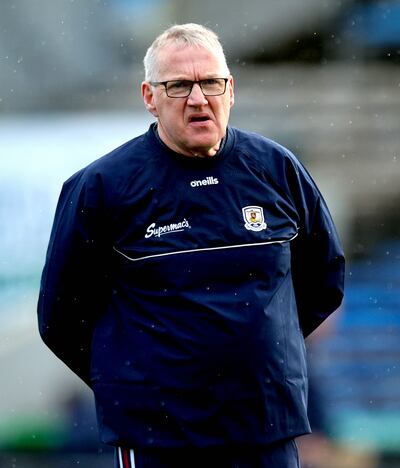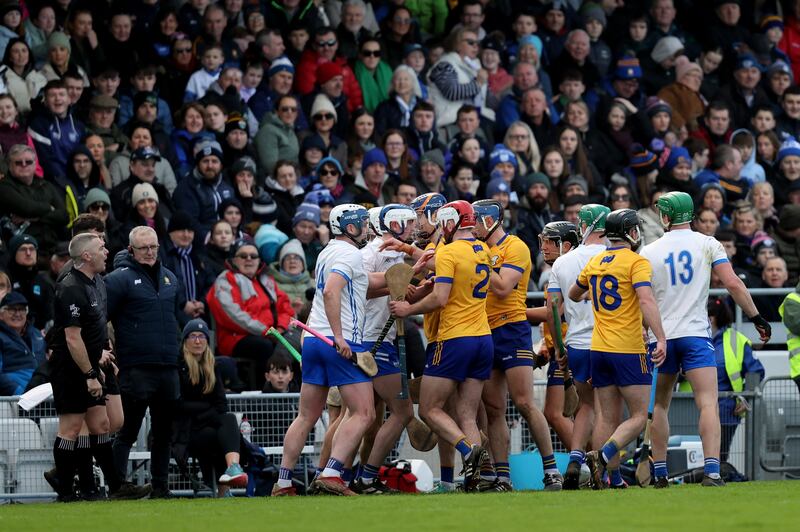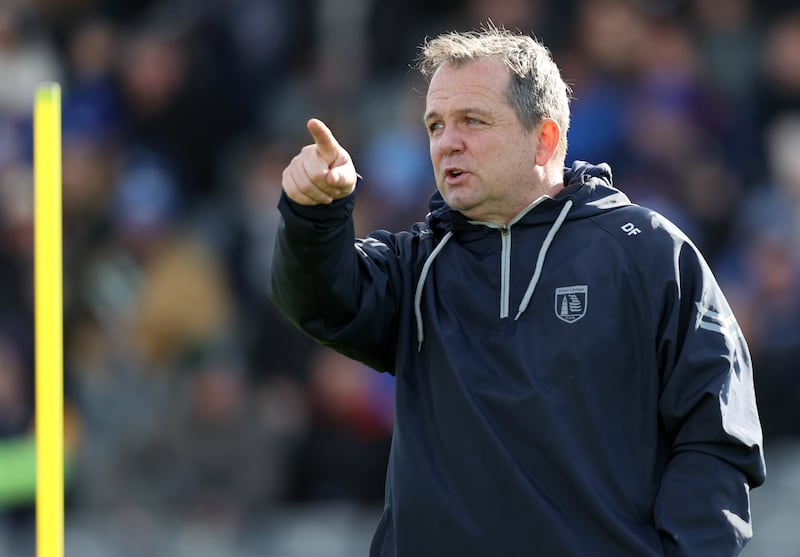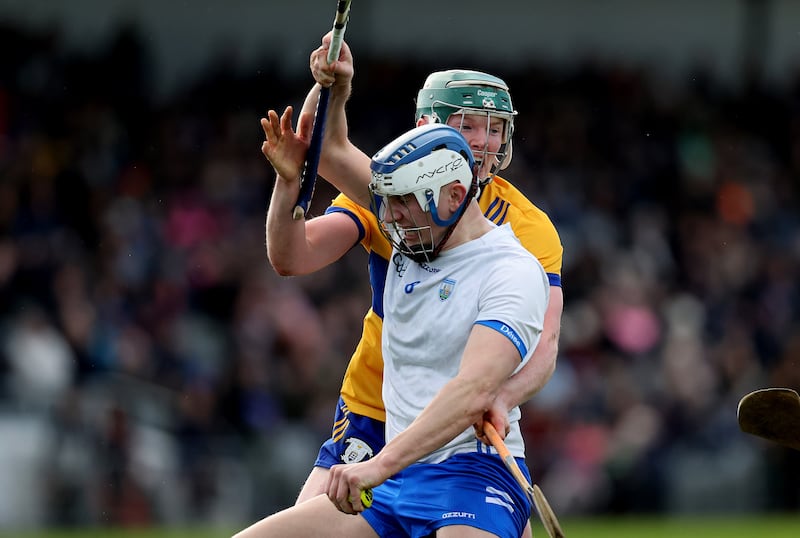Hurling’s phantom black card
At this time of year there are always “hot” infringements that have clearly been flagged to the referees in their preseason briefings. One year, not so long ago, it was head-high tackling. Other years it’s the handpass. Or steps.
But what about hurling’s black card? This rule was brought in specifically to incentivise goalscoring and punish cynical tackling close to goal.
In Thurles, the rule was applied as it was intended in the closing minutes when Tipperary’s Conor Stakelum was hauled to the ground, outside the large parallelogram, but with a clear goalscoring chance in the making. Seán Linnane was black-carded and a penalty was awarded to seal the game for Tipp.
On Saturday night, however, Patrick Horgan was fouled by Huw Lalor, just outside the large parallelogram, but with no covering defenders. Without Lalor’s intervention the Cork full-forward would have been clean through on goal. However, no penalty was awarded and no black card was issued.
Inside Gaelic Games: The weekly GAA newsletter from The Irish Times
Cork’s red mist gave Clare chance to make the numbers count
Seán Moran: Sobering question for the GAA - does intercounty involvement do players more harm than good?
Leinster excel when it comes to refining link between attack and defence
Johnny Murphy is one of hurling’s top referees but, like many players at this time of the year, the performance he gave on Saturday night wouldn’t get him a start in the championship. This was probably his biggest error.
The point about the black card, though, is that it seems to drift in and out of application. In the Clare-Tipperary championship match last April, David McInerney was black-carded for bringing down Jason Forde in a goalscoring position and the penalty was buried.
It was the correct decision, but Brian Lohan made the observation afterwards that he hadn’t seen the rule applied in a championship match since 2021 – and he was right.
This is a good rule. It needs to be applied all the time. Goalscoring must be encouraged. – Denis Walsh
Changing styles to match the times we live in
As the teams warmed up yesterday in Thurles, your eye couldn’t but be drawn to the Galway players warming up at the Killinan End and the familiar figure of Eamon O’Shea putting them through their paces. Times change, teams change but you could still pick out his jitterbugging walk and his urgent body language at 100 paces.

What isn’t as obvious – at least not yet – is any sign that Galway have grooved themselves into what might broadly be termed the Eamon O’Shea way. They hung in the game against Tipp through willpower and obstinacy as much as anything. This wasn’t a festival of angled passes and ghosted runs. It was, to rob from Logan Roy, a fight for a knife in the mud.
But, of course, O’Shea is too shrewd a mind to expect what worked for Tipperary in the 2010s to fit the needs of Galway in the 2020s. The biggest mistake anyone coming up against them this year would make would be to assume that O’Shea is going to try to just run it all back in maroon rather than blue and gold. The game doesn’t work that way.
In which context, it was interesting to hear Liam Cahill after the game go into what he and Mikey Bevans are trying to do with Tipperary’s style of play. The power and heft in Tipp’s middle eight was very obvious yesterday, as was the fact that they were intent on running so much ball through the trenches there in order to attract opposition bodies and make space for their inside forwards.
“I think that’s starting to come to the fore in our work and in our plan,” Cahill said. “I wouldn’t even call it a plan. As a management team we are doing our best to give these guys extra strings to their bow. Tipp is known as a traditional county and you move the ball as fast as possible from A to B. And we’ve found out in recent years that teams figure you out and they tend to deal with that.
“I suppose what I’m trying to say is that we’re trying to bring a variation to our play and you could see that today at certain stages. We changed it up quite a bit and we’ll continue to try and work on that and see can we master it a bit better for later on.” – Malachy Clerkin

One in, all in
Sunday’s match in Walsh Park was vigorously contested by Clare and Waterford but the contest was partly expressed in the number of rucks that developed. These unsightly aggregations of players huffing and puffing around the ball and poking their sticks in a ritual attempt to dislodge it and gain control are not one of the glories of the game but a regular feature.
The referee has a judgement call to make. Is this likely to resolve itself reasonably quickly? How long do I give them to poke away? Then he resolves the matter with a throw-in, as stated in Part 2 of the Official Guide under ‘Important definitions’.
“21. THROW-IN: To throw the ball up over the heads of one player from each team (football), or to throw the ball along the ground between one player from each team (hurling). For the start of the game and the restart after half-time, the throw-in shall be between two players from each team.”
Whatever the deficiencies of this solution – creating another ruck – it at least breaks the deadlock. But in the situation that arose yesterday just before half-time, a confrontation between the players, leading to a free for Waterford, which was partly reversed by referee Liam Gordon to a throw-in when the confrontation persisted, is the last thing you want.
Bringing together players who have just been brawling and with temperatures rising brings obvious risks of escalation. One solution is to ensure that the two players involved have a degree of isolation rather than their respective entourages, eyes ablaze, in close proximity. – Seán Moran

Clearing the waiting lists
Waterford manager David Fitzgerald was asked by the Indo’s Conor McKeon after the defeat by Clare had he ever dealt with a squad short so many players. Alive to the opportunity to project hardship, Davy sighed, “Actually, I don’t think I have”.
On this occasion, though, the list of those hors de combat is indeed daunting. He listed those unavailable to him on Sunday: Calum Lyons, Dessie Hutchinson, Peter Hogan, Tadhg de Búrca, Kieran Bennett, Jack Fagan and Jamie Barron before agonising over Stephen Bennett’s withdrawal with a hamstring injury.
Clare were also missing significant names. Adam Hogan, Diarmuid Ryan and Mark Rodgers were pulled before the throw-in and their long-term absentees include Ryan Taylor, Tony Kelly and Shane O’Donnell.
Manager Brian Lohan pointed out afterwards that the weekend marked Peak Inconvenience in terms of the clash of intercounty league and relevant Fitzgibbon matches.
It’s all a bit of roulette wheel spin. This campaign will determine a new hierarchical structure for the 2025 league. Results matter. The new structure for the season with its slalom run into championship makes injuries all the more alarming.
You need your best players to get as good a start for next year as possible but you need them fit for the summer where a moderate injury can wipe out a provincial campaign.
Fitzgerald spoke of the pressure on Waterford whose experience of provincial round robin championships has, to say the least, not been positive. They are seeking to improver a dire record – two wins in 16 matches over four seasons.
Those attempts are under way, even if they have to come at the expense of nest year’s league. – Seán Moran

Waffling, windbagging and an apology
To begin, a mea culpa (from Malachy Clerkin). It isn’t from the weekend just gone but it was a learning experience all the same. Late last week, I went on RTE’s GAA podcast. We previewed the weekend’s hurling. We covered a grab-bag of subjects. We – or at least I – waffled and windbagged away and never gave it a second thought afterwards. I presumed nobody else would either.
In the course of it, the subject of Waterford and Ballygunner came up and we got into a short bit about dominant clubs in counties and the effect that can have on the county team. In the middle of it, I airily compared Ballygunner to Kilcoo in Down football a few years back and started warbling on about how it’s wrong when club players don’t test themselves at the highest level.
This was wrong, all wrong. As has been pointed out to me by various people from Ballygunner and Waterford generally over the past few days, there are seven Ballygunner players on the 2024 Waterford panel.
Last weekend against Offaly, Paddy Leavey started, Conor Sheehan and Patrick Fitzgerald came off the bench, Kevin Mahony was an unused sub and the trio of Dessie Hutchinson, Ian Kenny and Peter Hogan missed out through injury. Leavey, Kenny and Mahony all saw game time yesterday against Clare, with Sheehan and Fitzgerald on the bench.
The Ballygunner people who had a go were completely right to do so. Apologies to all concerned. – Malachy Clerkin













